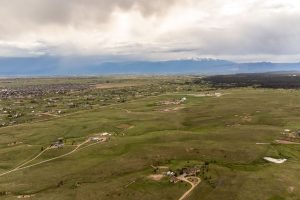Terry Stokka has lived in Black Forest for 29 years. He is president of the Friends of Black Forest, chairman of the Black Forest Land Use Committee and chairman of the Black Forest Water & Wells Committee.
Those of you who get The Gazette know the continuous articles about water shortages and other water issues. For the rest of you, I would like to pull together some facts and information in this monthís article to educate you on the Colorado River.The mighty Colorado River starts near Leadville and winds its way southwest through the Grand Canyon and finally into Mexico and the Gulf of California. Some years, the river is dry by the time it gets to the Gulf. The river provides water and electricity to more than 45 million people in seven states ó Colorado, Utah, Nevada, New Mexico, Arizona, California and Wyoming.Two major dams along the river are Glen Canyon Dam with Lake Powell and Hoover Dam with Lake Mead. Right now, both lakes are at about 27% of their capacity and dropping. Lake Mead has dropped 170 feet since it was last full in 2000. The low level of the lakes has reduced the power generation to 40% of the optimum because some of the turbines have to be shut down. If Lake Powell drops another 50 feet or so, they wonít be able to generate electricity.Holding back water and getting extra water from reservoirs along the river has kept the two lakes from dropping to critical levels, but the ongoing drought has officials worried that long-term drought means the lakes will continue to drop. Just imagine the impact if these two dams cannot generate electricity for the southwest states?Colorado Springs gets 70% of its water from the Colorado River. Water is pumped across the Continental Divide to Twin Lakes near Leadville and then it flows all the way to the Pueblo Reservoir via the Arkansas River, where the Southern Delivery System brings it up to our city.The 1922 Colorado River Compact was an agreement formed 100 years ago that allocated water to the seven states along the river. That agreement was made when the annual snowpack was much larger so with decreased snowpack and increased water use, changes must be made somewhere to ensure water for irrigation, people and electricity.Two months ago, the federal Bureau of Reclamation issued an order for the seven states to find a way to decrease water use by 2 to 4 million-acre-feet a year. This is a drastic cut given that all seven states use about 12 million-acre-feet a year so the cut is in the 15% to 25% range. Just a few days ago, the Bureau concluded that no one was willing to make any significant cuts so the directive was effectively kicked down the road until another day. In the meantime, extra water is being released from dams on other lakes in Colorado, and Lake Powell is holding back a big chunk of water that will keep its level from dropping for another year.So what is the answer? For starters, we all need to use water wisely and carefully. Since 85% of the water use in Colorado is for irrigation, that is a prime target for water reduction. Farmers are using irrigation sprinklers closer to the ground to conserve water. It is shocking that 85% of the water for irrigation evaporates into the air and only 15% sinks into the ground. More farmers are using drip systems that have piping through the fields that reduce water consumption by 80% when the water is applied directly at the roots next to the ground. We have all seen the huge round pivots that spray water like a fountain, and we cringe to think of the water that is wasted.In some places, states are paying farmers not to grow crops so water can be saved, but this solution has ripple effects like increasing hay and vegetable prices with less production so it is not the best.Finally, it may be time for the coastal states like California to build desalination plants to convert seawater for drinking. Israel has made incredible strides in technology in this area and we would do well to look to them as an example of how to convert seawater.We will all be watching the Colorado River over the next few years to see how the seven Colorado River Basin states handle this dilemma. For those of us on private wells, we are immune to these problems for now, but we need to be careful because we have problems of our own that we need to address.




